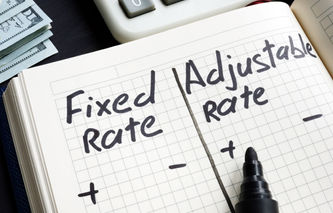There are prime loans, subprime loans, and somewhere in between is the Alt-A loan. This type of mortgage is considered riskier than an A-paper loan (prime), but not quite as risky as a subprime loan; which is generally considered the riskiest type of mortgage a lender can write.
In this article, we're going to talk about Alt-A loans. As part of that discussion, we'll explain why a loan might be characterized as Alt-A. Then we'll explain why the attributes of these loans make them riskier than a prime, or conforming, loan. Finally, we're going to finish up with a discussion of how these loans can further aggravate an already ailing mortgage industry.
Alt-A Loans Defined
The Federal National Mortgage Association (FNMA, or Fannie Mae) and the Federal Home Loan Mortgage Corporation (FHLMC, or Freddie Mac) were Government Sponsored Enterprises (GSE). The purpose of these organizations was to create an active secondary market for mortgages, so banks and other lending institutions could continue to help homebuyers finance their homes. They carried out this task by purchasing and repackaging mortgages until they were taken over by the Federal Housing Finance Agency in late 2008.
In order to guarantee the marketability of these loans, the GSEs provided lenders with guidelines aimed at establishing the creditworthiness of borrowers. Loans compliant with these guidelines are known as "conforming" loans.
An Alt-A loan is, by its very definition, a non-conforming loan. It is a loan, which for a variety of reasons, did not meet one or more of the guidelines established by these GSEs, and therefore was considered a riskier loan.
Characteristics of Alt-A Loans
While there can be a number of factors that might result in a mortgage being characterized as an Alt-A loan, the most common factors include:
Loan-to-Value Ratio: generally, homebuyers are expected to place a down payment on a home that is at least 10% of the home's value, which is a loan-to-value ratio of 90%. When the loan-to-value ratio is above this guideline, the mortgage may not qualify as a conforming loan.
Lack of Documentation: when writing the mortgage, the lender may have accepted the applicant's monthly income or claim of assets as merely stated by the borrower. There was no follow-up conducted by the lender on record to validate either the value of the assets claimed and / or the applicant's income was not verified.
Creditworthiness: the borrower may have a credit rating, or exhibit a credit history that does not meet the standards of a GSE loan, but is above the threshold established for a subprime loan.
Debt-to-Income Ratio: there are certain guidelines that prescribe the debt-to-income ratio of the applicant. For example, the repayment on a monthly loan cannot exceed a certain percentage of the household's monthly income. An Alt-A loan may exceed this percentage, and the borrower will have to devote a higher percentage of their income each month to pay back their loans.
Risk of Alt-A Loans
Many times, Alt-A loans are the best option for borrowers that have problematic credit histories. For example, a prime borrower might have a FICO credit score above 680, an Alt-A borrower between 680 and 580, while a subprime borrower might have a score that is less than 580.
According to a study conducted by the U.S. Department of the Treasury and published in December 2008, Alt-A mortgages represented 10% of the total number of mortgages in-place at the end of June 2008. However, these same loans constituted over 20% of all foreclosures. In addition, an August 2008 report published by Freddie Mac found that the rate of deliquency for individuals paying back an Alt-A loan was four times higher than prime mortages.
These risks of non-payment are often the price lenders are willing to pay for writing loans that lack the proof or documentation needed for a conforming loan. For many years, lenders were willing to take this risk due to the higher profit margins associated with these loans. However, when a borrower overstates their income to qualify for a larger mortgage, they may not be able to afford their monthly payments when financial hardships hit home.
Negative Amortizations and Resets
The number of Alt-A loans written skyrocketed about fifteen years ago. According to statistics gather by the Federal Reserve Board, Alt-A loans grew faster than any other loan type: from 304,000 in 2003 to 1,100,000 in 2005. Unfortunately, the popularity of these loans spelled trouble for an ailing mortgage market when these loans began hitting their reset timeframes.
A reset occurs when an existing loan's low "teaser" rate expires. When that happens, the interest rate on the loans, and therefore the borrower's monthly payment, rises. There is also concern surrounding the numbers of Alt-A loans that were written as negative amortization loans.
With this last type of loan, the borrower is paying less than a full mortgage payment each month. When that occurs, the money owed on the home grows over time. That's why the loans are termed negative amortization.
During the reset period for a negative amortization loan, not only will the borrower be forced to refinance the home at a higher interest rate, but they may also need to borrow more money to keep their homes. An increase in these two factors can sometimes lead to unaffordable loans, and a commensurate increase in the numbers of bankruptcies and home foreclosures





